Which of the following shapes has the largest perimeter?
Option A: 4×8=32 cm
Option B: 2×(3+11)=28 cm
Option C: 3×10=30 cm
Option D: 4×2+3+9=20 cm
⇒A
Calculate the surface area of a sphere with a radius of 5 cm, correct to the nearest whole number.
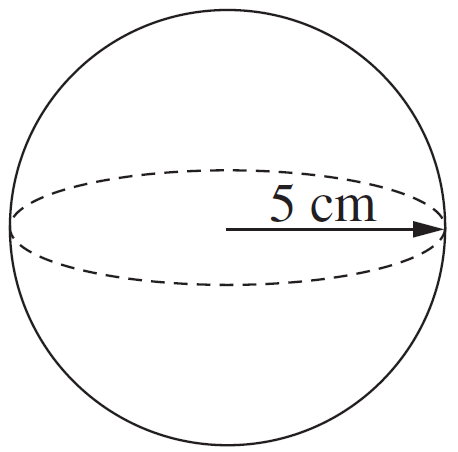
314 cm²
Which of the solids shown is a prism?
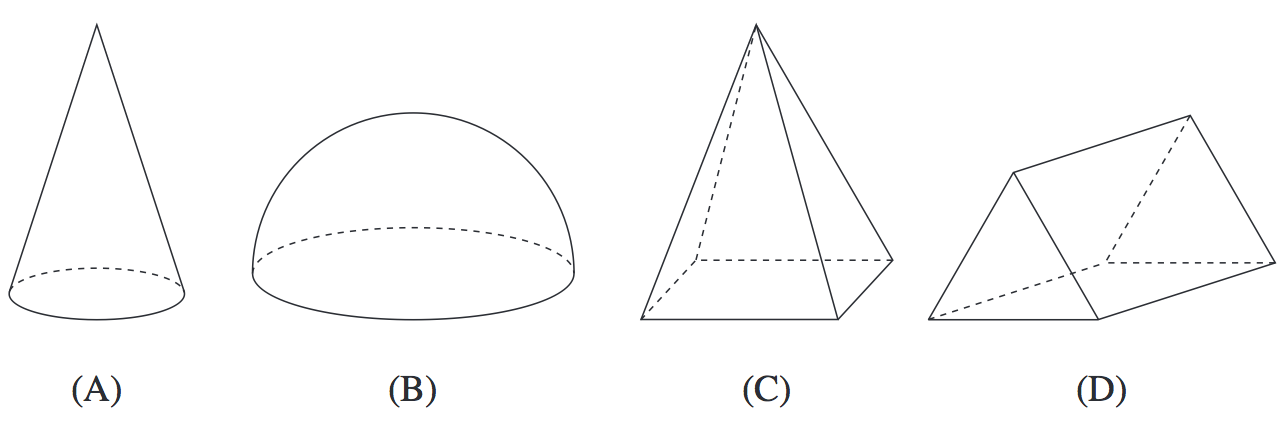
D
A field is bordered on one side by a straight road and on the other side by a river, as shown. Measurements are taken perpendicular to the road every 7.5 metres along the road.
Use four applications of the Trapeziodal rule to find an approximation to the area of the field. Answer to the nearest square metre.
242 m²
Which of the following shapes has the largest perimeter?
Option A: 4×8=32 cm
Option B: 2×(3+11)=28 cm
Option C: 3×10=30 cm
Option D: 4×2+3+9=20 cm
⇒A
A composite solid consists of a triangular prism which fits exactly on top of a cube, as shown.
Find the surface area of the composite solid.
424 cm2
A rectangular pyramid has base side lengths 3x and 4x. The perpendicular height of the pyramid is 2x. All measurements are in metres.
What is the volume of the pyramid in cubic metres?
8x^3
A block of land is represented by the shaded region on the number plane. All measurements are in kilometres.
Approximate the area of this block of land in square kilometres, using two applications of the trapezoidal rule.
19.8 km2
A shape consisting of a quadrant and a right-angled triangle is shown.
What is the perimeter of this shape, correct to one decimal place?
36.6 cm
A child's toy has the following design.
Find the area of the shaded region to the nearest square centimetre.
27 cm²
The volume, V, of a sphere is given by the formula
V=4/3pir^3
where r is the radius of the sphere.
A tank consists of the bottom half of a sphere of radius 2 metres, as shown.
Find the volume of the tank in cubic metres, correct to one decimal place.
16.8 m^3
Three equally spaced cross-sectional areas of a vase are shown.
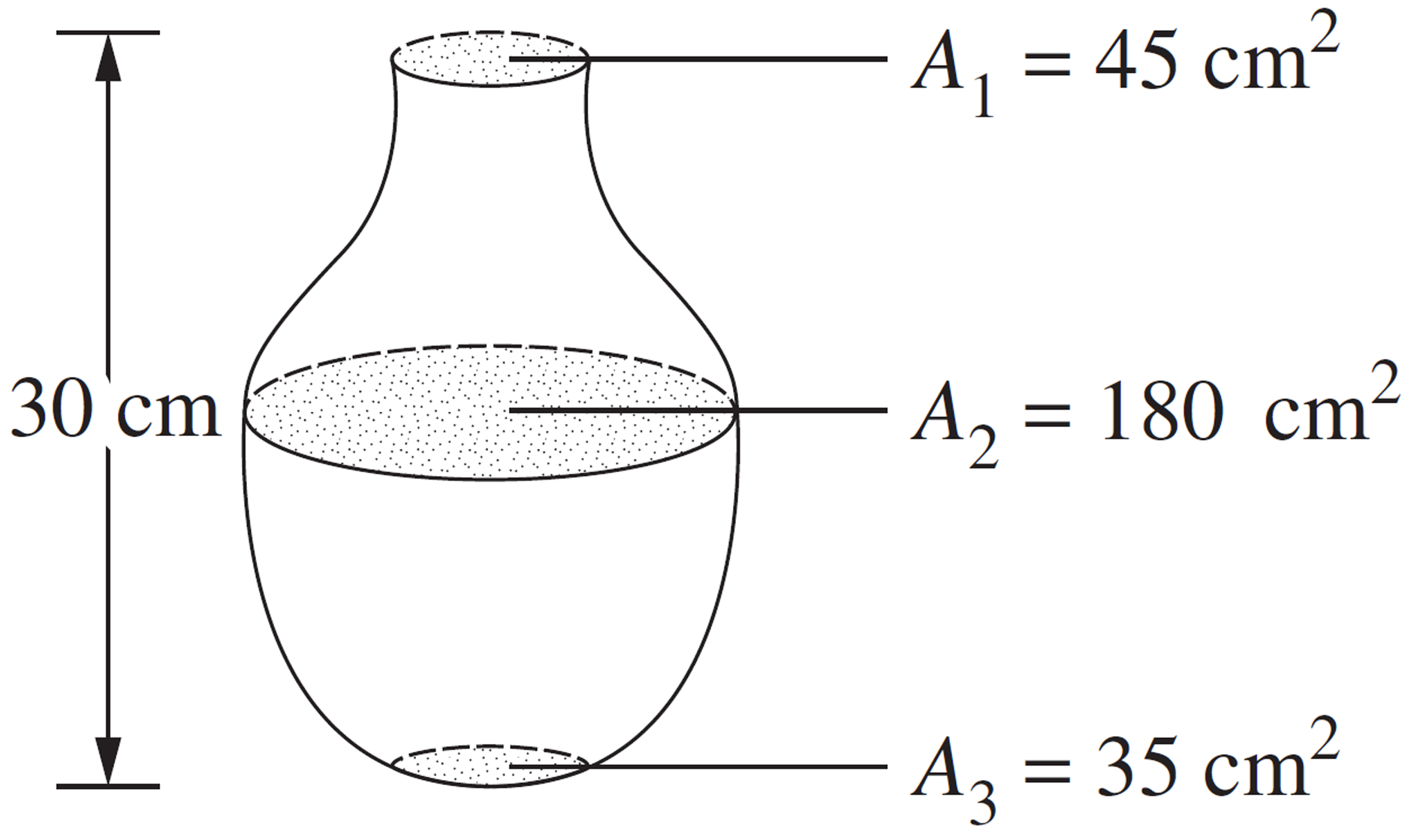
Use the Trapezoidal rule to find the approximate capacity of the vase in litres.
3.3 L
The diagram shows a sector with an angle of 120° cut from a circle with radius 10 m.
What is the perimeter of the sector? Write your answer correct to 1 decimal place.
40.9 m
A path 1.8 m wide is being built around a rectangular garden. The garden is 8.4 m long and 5.4 m wide. The path is shaded in the diagram.
The path is to be covered with triangular pavers with side lengths of 15 cm and 20 cm as shown.
The pavers are to be laid to cover the path with no gaps or overlaps.
How many pavers are needed?
4176
The area of a roof is 30 m². Any rain that falls on the roof flows directly onto a garden.
Calculate how many litres of water flow onto the garden when 20 mm of rain falls on the roof.
600 L
The shaded region on the diagram represents a garden. Each grid represents 5 m × 5 m.
Use two applications of the trapezoidal rule to calculate the approximate area of the garden.
850 m2
The sector shown has a radius of 13 cm and an angle of 230°.
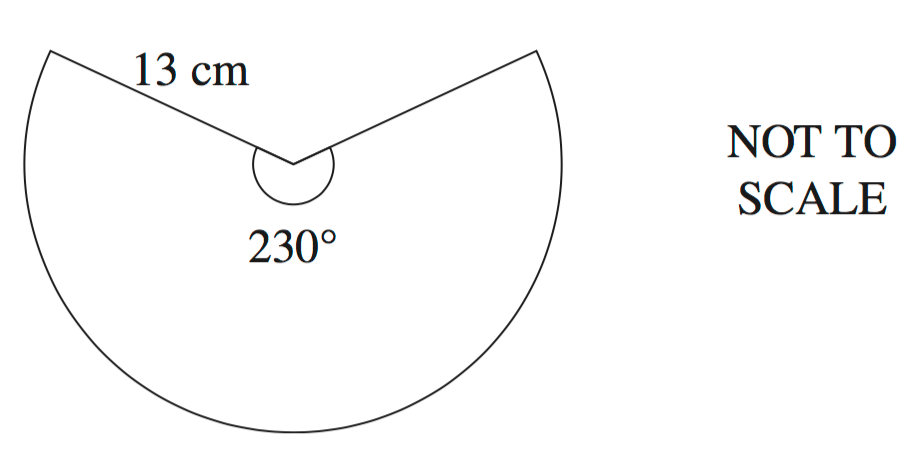
What is the perimeter of the sector to the nearest centimetre?
78 cm
This shape is made up of a right-angled triangle and a regular hexagon.
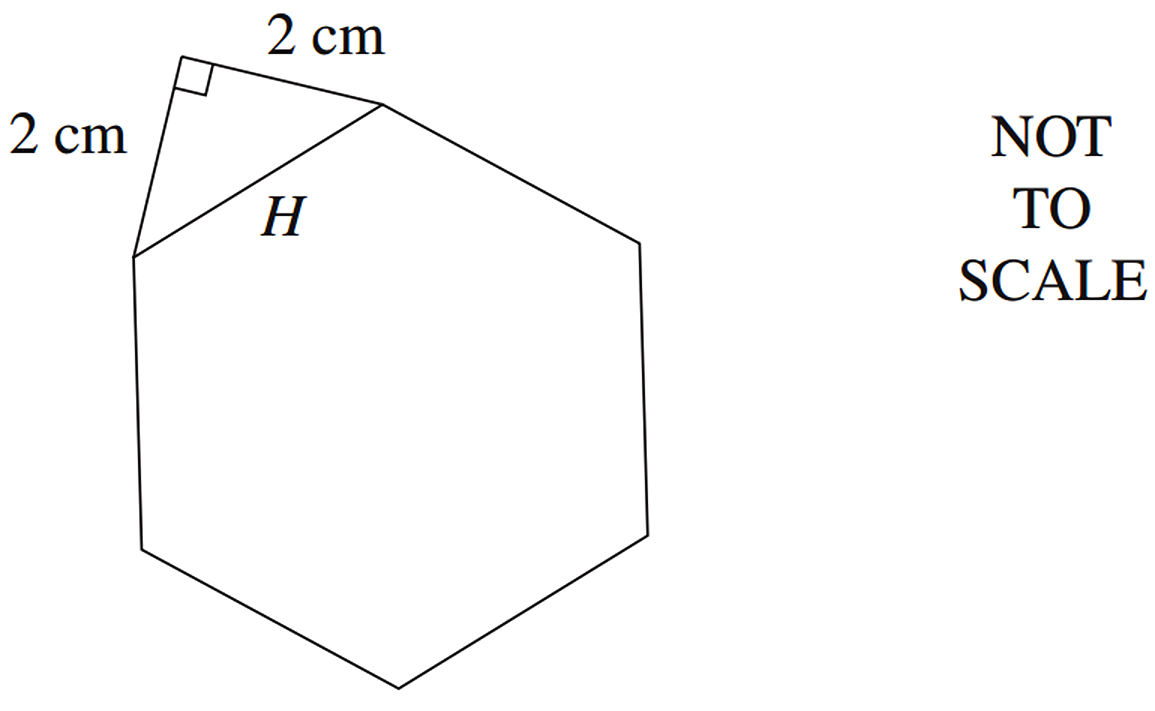
The area of a regular hexagon can be estimated using the formula
A = 2.598H^2
where H is the side-length.
Calculate the total area of the shape using this formula.
22.784 cm²
A solid is made up of a sphere sitting partially inside a cone.
The sphere, centre O, has a radius of 4 cm and sits 2 cm inside the cone. The solid has a total height of 15 cm. The solid and its cross-section are shown.
Using the formula
V=1/3pir^2h
where r is the radius of the cone's circular base and h is the perpendicular height of the cone, find the volume of the cone, correct to the nearest cm³?
113 cm³ (nearest cm³)
A new 200-metre long dam is to be built.
The plan for the new dam shows evenly spaced cross-sectional areas.
Using the Trapezoidal rule, show that the volume of the dam is approximately 44 500 m³.
44 500 m³